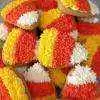-
Welcome to Celiac.com!
You have found your celiac tribe! Join us and ask questions in our forum, share your story, and connect with others.
-
Celiac.com Sponsor (A1):
Celiac.com Sponsor (A1-M):
-
Get Celiac.com Updates:Support Our Content
Son's Upcoming Blood Draw
-
Get Celiac.com Updates:Support Celiac.com:
-
Celiac.com Sponsor (A17):
Celiac.com Sponsor (A17):
Celiac.com Sponsors (A17-M):
-
Recent Activity
-
- Scott Adams commented on Jefferson Adams's article in Gluten-Free Foods & Beverages2
Is tomato paste gluten-free and safe for people with celiac disease?
It’s understandable to feel anxious about staying gluten-free while traveling, but with some preparation, you can enjoy your trip safely. In Spain, gluten-free awareness is growing, and many restaurants (especially in tourist areas like Benidorm) label allergens—look for "sin gluten" (without gluten) or ask staff about "alérgenos." Stick to naturally glut...- celiac disease
- gluten-free
- (and 2 more)
-
- Scott Adams replied to Deb67's topic in Gluten-Free Foods, Products, Shopping & Medications4
is Kirkland Imported French Brie gluten free?
This is great info, so thanks for sharing it. I had no idea Costco provides this service, yet I've been a member for over two decades. In the United States, all food manufacturers, including any that ship foods for sale in the USA, are required to comply with the Food Allergen Labeling and Consumer Protection Act (FALCPA) of 2004, which mandates clear... -
- Jane07 posted a topic in Gluten-Free Foods, Products, Shopping & Medications0
Breyers ice cream is it still gluten free?
i really like Breyers ice cream and it used to have a label saying gluten free? is it still gluten free does anyone know i was wondering if the French Vanilla Black Cherry Napoleon are still gluten free the label not on it anymore -
- Michelle Amirault-Packard replied to ChrisDun's topic in Post Diagnosis, Recovery & Treatment of Celiac Disease8
Intermittent Fatigue
Thank you for this information! -
- Jane07 replied to Jane07's topic in Celiac Disease Pre-Diagnosis, Testing & Symptoms2
any advice would be helpful
they gone down alot since my diagnosis . the ttg test was done in a hospital it still not in the normal range 2 yrs later. the last time went up by the one before a little. maybe it just takes more time really trying to be careful i need to look at everything i eat to make sure
-




Recommended Posts
Archived
This topic is now archived and is closed to further replies.